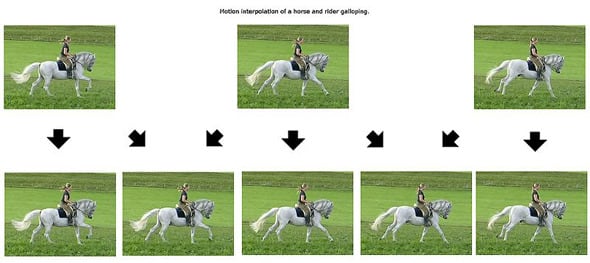Cleaning Up the Soap Opera Effect: Motion Interpolation and Why 480Hz Looks Terrible on Your New TV
Why does motion interpolation make film based content uncomfortably smooth? We'll explain.
Products are chosen independently by our editors. Purchases made through our links may earn us a commission.
We have seen comments from dismayed consumers saying that their new, expensive television makes all content look like it was cheaply produced. We know this problem well. It is the result of motion interpolation, a marketing feature added to all high-end televisions, and it is easy to turn off.
The problem stems from a difference in frame rate. Most HDTVs have a native refresh rate of 60Hz, able to show 60 frames per second (fps). The National Television System Committee (NTSC) determined in the 1940s that 30fps would be the standard broadcast frame rate because the film standard of 24fps is easily converted to 30fps (it’s actually 29.97fps but that is for a different article). Using a 60Hz display to replay 30fps content works out great because showing each frame twice, at double time, has no effect on the playback. If you show frames A,B,C,D as AA,BB,CC,DD at twice the speed, it will look exactly the same.
More recently, refresh rates of 120Hz, 240Hz, and even 480Hz are advertised. To achieve these refresh rates, televisions do not have super-powered processors, rather they have engineered software that interpolates motion. Motion interpolation software takes information from frame A, and frame B, and averages the brightness and color coordinates in each frame to create a third frame between the two.

Middle frames are new. They were never recorded as part of the original content.
The television creates new pictures and inserts them between frames to add smoothness to your picture.
In AV and HDTV forums around the internet, you will see complaints from people who have saved and spent a hefty sum of money for a high-performance television, only to be severely disappointed by the images they see when they get home. Comments often include the terms Soap Opera or Camcorder, relating the picture these users see to cheaply recorded video.
These descriptions are very accurate because of the frame rate differences between video and film. Film is very costly to use, requiring the purchase of physical film reels and an expensive development process. For significantly less money, shows can be shot and produced on digital video, which is generally recorded at 60fps. Soap operas are often recorded at 60fps because they cannot afford film.
Working with a 30fps piece of content, we have already determined that if you show each frame twice, at twice the rate, you will end up with a perfectly reproduced picture at 60fps. Interpolating this 60fps content, you get 120fps. If you divide 120 by 2, as each frame is played twice, you get 60 unique frames per second. Essentially, the motion interpolation has taken 30fps content and replayed it as though it had been recorded at 60fps. What once looked like expensive film, now looks like cheap digital video. Companies that claim refresh rates of 240Hz are further interpolating, averaging the averaged frames.
This over-smoothing is easily remedied. If you go to the picture settings in the main menu, then into the advanced picture settings, you will be able to turn the motion interpolation off. Wikipedia has a decent list of the names of these functions by brand. With the motion processing turned off, your picture will look much better, especially with any film based content.
As an exception, you may really like these features for watching sports. Sport broadcasts are recorded at 60fps and the added interpolation can actually make for a great picture. You may notice that motion processing features are demonstrated using clips from sports games, because the developers know that film content looks terrible when it is interpolated.
It is difficult to determine why high frame rates on cinematic or narrative content is uncomfortable to watch. Is it that we have become used to 24fps as a standard and anything else looks unnatural? Or that we subconsciously know that 60fps equals cheap video equipment? Or do we actually prefer 24fps? There are a number of theories on the subject. Cinematographer Naim Sutherland is often quoted regarding high frame rates:
"The goal of motion pictures is not to recreate reality, it's not even to show reality...By not showing enough visual information, we force the brain into filling in the gaps... it draws you in even more. It's part of how you let go to the point where you can laugh or cry or feel tense or afraid or elated."
It’s a powerful quote to be sure, but there are others that disagree. Three-time Oscar-winning director James Cameron says that he sees 60fps as the Future of Film, and plans to shoot Avatar 2 in this manner. We shall see. For now, switch the motion interpolation off, and you will be much happier with your new television.
